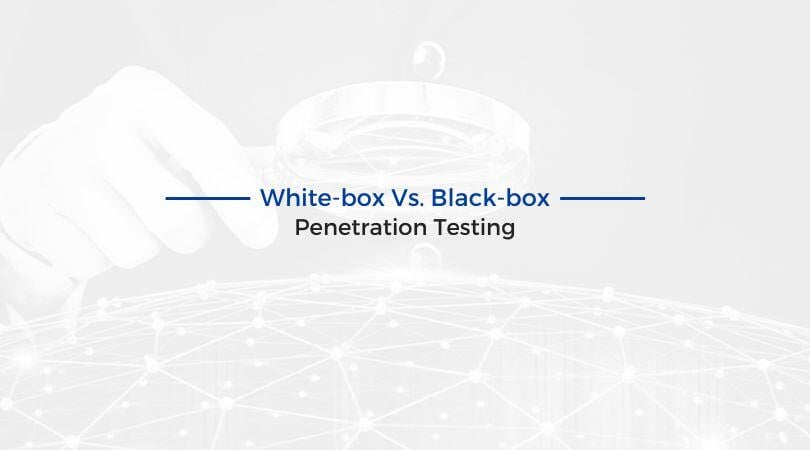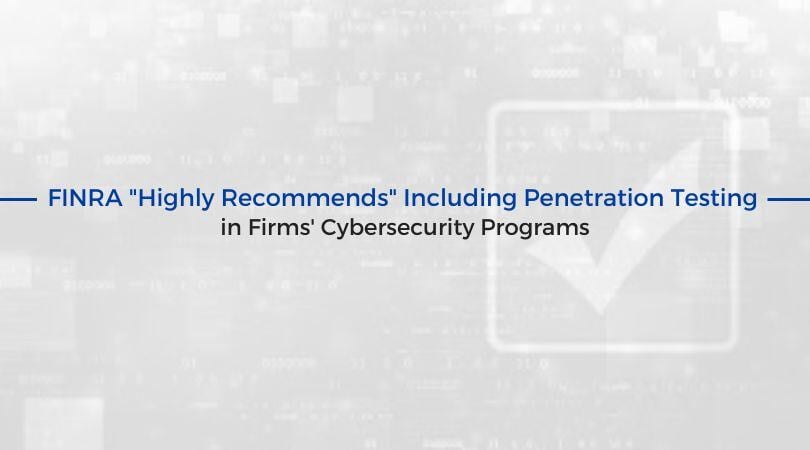FINRA “Highly Recommends” Including Penetration Testing in Firms’ Cybersecurity Programs
The need for robust cybersecurity measures has become paramount in the ever-evolving landscape of financial services. Financial institutions are...

In the realm of cybersecurity, where the constant battle between defenders and attackers rages on, penetration testing is a crucial tool to fortify your digital landscape. While there are countless approaches, white-box and black-box penetration testing are two options that can contribute to a comprehensive defense strategy. Each brings advantages and disadvantages, so which is right for your business?
In this blog, we’ll break down the differences between white-box and black-box penetration testing, and as a bonus, we’ll share what we recommend for our clients at PK Tech. Read below!
White-box testing, often called clear-box or glass-box testing, takes a transparent approach. In this method, the tester is armed with complete knowledge of the system’s internal architecture, administrative tools, and infrastructure. Think of it as having a detailed map of a city before attempting to navigate through its streets.
1. Comprehensive Insight: White-box testing provides a holistic understanding of the system, enabling testers to identify vulnerabilities that might otherwise go unnoticed.
2. Efficient Remediation: With access to admin information, security flaws can be pinpointed accurately, making remediation efforts more targeted and efficient.
3. Realistic Simulation: Mimicking a scenario where an insider threat exists, white-box testing mirrors the potential dangers posed by individuals with internal access.
1. Assumption of Perfect Knowledge: White-box testing assumes a level of knowledge that an external attacker might not possess, potentially leading to biased results.
2. Time-Consuming: The exhaustive nature of white-box testing can make it time-consuming and resource-intensive, especially for large and complex systems.
On the opposite end of the spectrum, black-box testing simulates an external attacker’s perspective. Testers embark on the challenge without any prior knowledge of the system’s internal workings, akin to exploring a city without a map.
1. Real-World Simulation: Black-box testing replicates real-world cyber-attack conditions, providing a genuine assessment of an organization’s security posture.
2. User Experience Evaluation: Since the tester approaches the system with fresh eyes, black-box testing assesses the security measures from the standpoint of an uninformed user.
3. Quick Deployment: Black-box testing is often quicker to deploy since it doesn’t require the extensive preparation needed for white-box testing.
1. Limited Insight: Testers lack the in-depth understanding of the internal structure, potentially missing vulnerabilities that are buried deep within the system.
2. False Negatives: The lack of knowledge might result in false negatives, where vulnerabilities exist but go undetected due to the tester’s unfamiliarity with the internal workings.
In the dynamic landscape of cybersecurity, many organizations opt for a combination of white-box and black-box, arguing that it yields the most robust results. Termed as gray-box testing, this hybrid approach balances the strengths and weaknesses of both methodologies.
In many cases, the choice between white-box and black-box penetration testing should be driven by the specific goals and needs of the organization. Understanding the nuances of each methodology empowers cybersecurity professionals to tailor their approach and build a robust defense against the ever-evolving landscape of cyber threats.
At PK Tech, we recommend and sell white-box penetration testing tools and services. Why? It’s the best of both worlds: white box penetration testing finds most issues because you have admin credentials. Black Box, on the other hand, is like truly trying to hack someone (not something we personally recommend).
Questions about the white-box penetration testing services we provide? Get in touch with our team here.

The need for robust cybersecurity measures has become paramount in the ever-evolving landscape of financial services. Financial institutions are...

With the many uncertainties of 2020, organizations worldwide hope for consistency and reliability as we head into 2021. This year, the COVID-19...

In today’s interconnected digital landscape, security protocols are more critical than ever. With the rise of sophisticated cyber threats,...